Cape Confidential: An Insider’s Guide to Cape Cod
Traveling this famed peninsula from its sturdy shoulder to its fingertip, a local writer shares the secrets of enjoying the Cape like an insider.
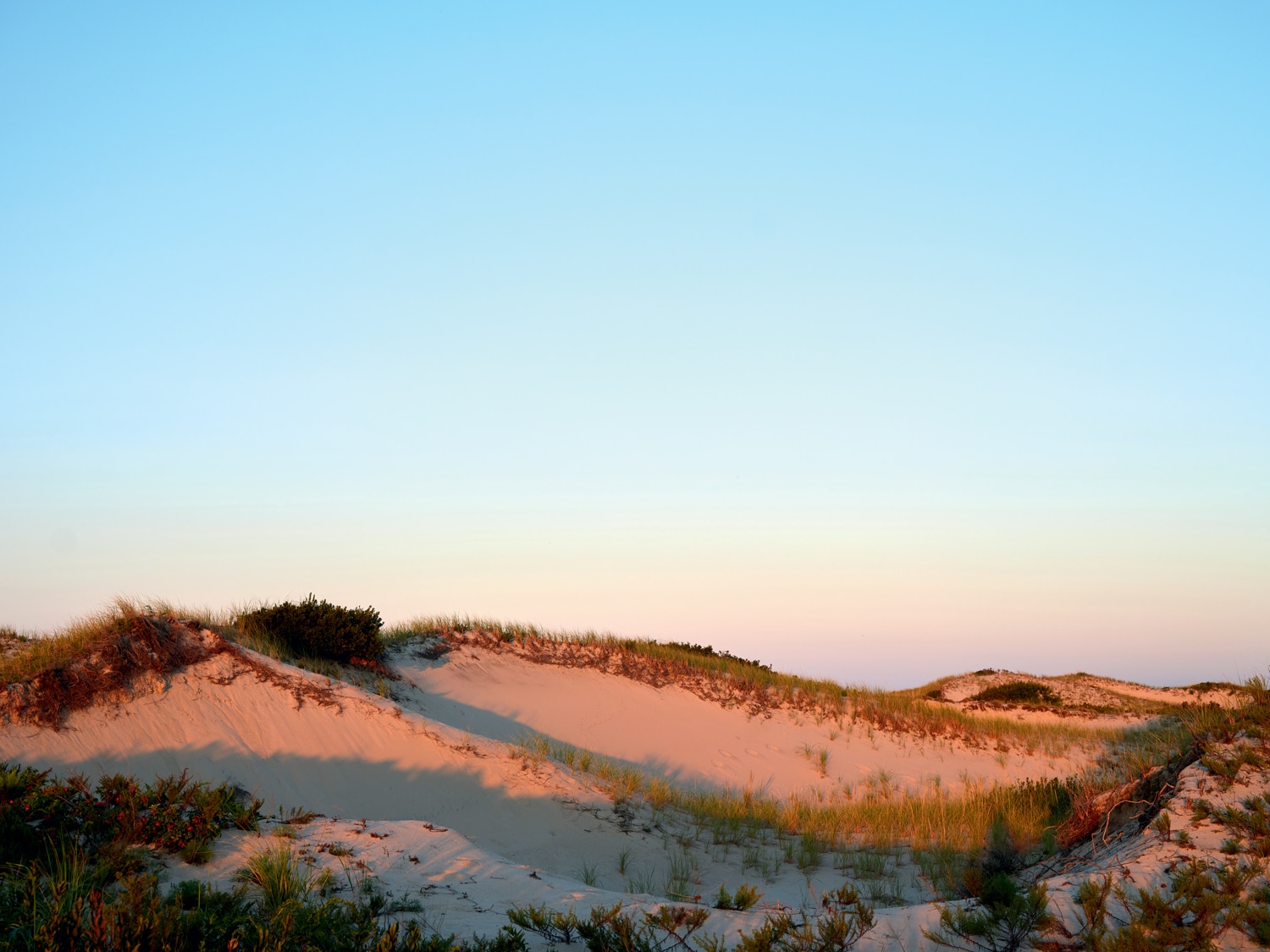
With six miles of shoreline running from West Barnstable to Sandwich, Sandy Neck Beach Park is a perennial hot spot for beachgoers—but take a short walk into the sand dunes and coastal thicket at this 4,700-acre park, and you’ll be in a world of your own.
Photo Credit : Elizabeth CecilRun all errands on sunny days. Never go off-Cape on a Sunday. Head to the beach before 8 a.m. or after 5 p.m. Take the back roads. Avoid turning left. For year-round residents of Cape Cod, these are the Rules of Summer. (You think I’m kidding about that last one? Recently my bank’s local branch closed, and in recommending an alternative, my neighbor Steve told me, “I can get there and back without ever making a left.”)
The Rules of Summer are designed to keep us moving contentedly through our in-season workdays, but there are no rules for visitors. And we year-rounders like to enjoy our summer days. Right here. The Cape is roughly 65 miles long. There’s a lot to see and do, and wherever we live on this arm-shaped sandbar, we cherish our more hidden places, and we’re always game for new adventures.
Come with me to experience the Cape like a local. Choose as much or as little of the itinerary as you like. But I know that it’s possible to check off every activity on my list in seven glorious summer days and still have time for evening concerts, stage shows, mini golf, and moonlight strolls on the beach.

DAY 1: We Round the Shoulder
(Falmouth–Buzzards Bay–Bourne)
It’s just past 7 a.m. when we roll through Falmouth’s still-sleepy downtown, heading toward the water. We pass the Lin Whitehead Bandshell, where the nearly 100-member town band performs every summer Thursday night. We turn onto Surf Drive. Low-lying fog embraces the sea. As we drive, the stretch of water transforms to salt marsh. The sun breaks through, and soon enough the light is almost sparkling, and the wetlands are—pink. Pink? We slow down to investigate. Then we park in a pull-over spot to get closer to what must be thousands of blooming mallows, and grab a photo.
Overhead, an osprey returns to its nest across the street, fishy breakfast in its talons. Inspired, we pass Nobska Light and drive into the center of Woods Hole. Pie in the Sky opens at 5 a.m., and by 9 it’s bustling with happy larks—morning people. I wonder if we might squeeze in a visit to the Woods Hole Science Aquarium (the country’s oldest, established in 1875), but no: We’ve lingered over breakfast, and now we have a train to catch.
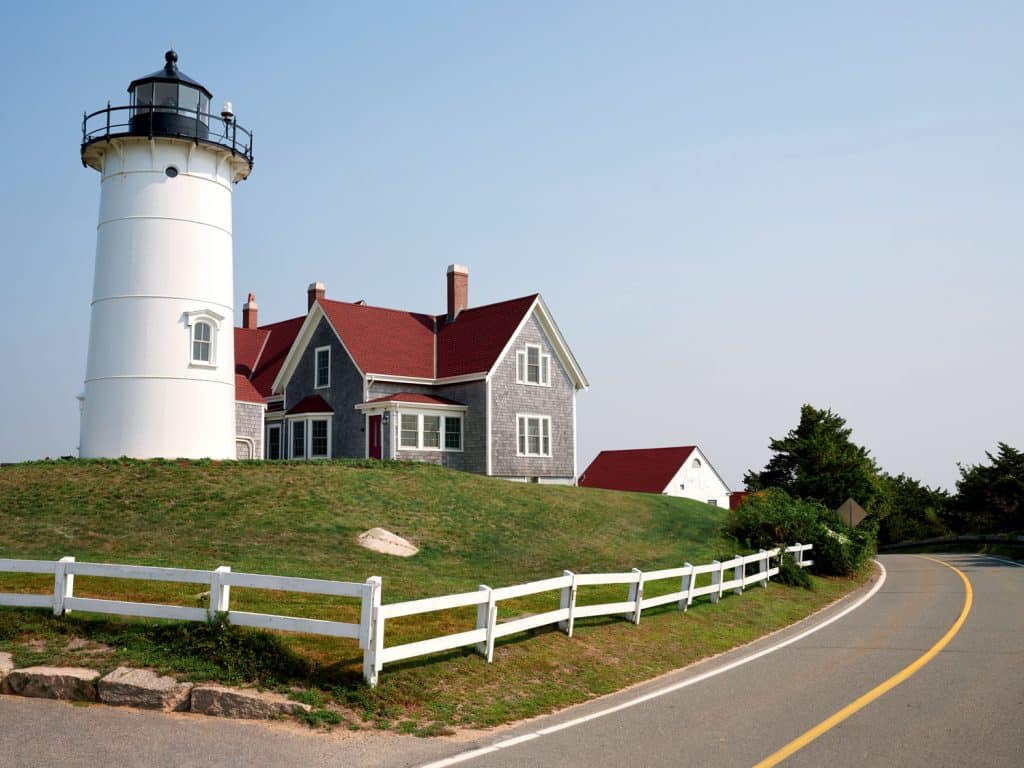
Photo Credit : Elizabeth Cecil
We drive over the Bourne Bridge to the village center of Buzzards Bay, and check in for the Canal Excursion Train. Cape Cod Central Railroad offers lots of rides to choose from, but this two-hour route means we’ll travel back across the canal over the Art Deco engineering marvel that is the Cape Cod Canal Railroad Bridge. This train can run late because the marine traffic has right-of-way, our conductor explains. The tide shifts so quickly that once a vessel enters the canal, the bridge remains suspended until it passes beneath. I don’t mind waiting. I’m looking forward to watching the 554-foot span descend 135 feet to meet the tracks.
As the train wends its way through Bourne, our tour guide points out the sights, both historical and natural. Once we pass under the Sagamore Bridge, we are traveling what feels like a woodland trail toward Sandwich and West Barnstable. (Splurge for an upper berth to see the bay above the treetops.) I relax into the rhythm of the wheels, feeling as though real life is somewhere out there, and I need not concern myself with it. Whenever we emerge into open vistas, there’s plenty to see. In late August, the bogs are heavy with cranberries, and I learn that it takes at least 100 years of accumulating sediment to produce one foot of peat. These bogs are old! In the Cape’s agrarian past, our guide tells us, cows were pastured in marshlands, and farmers fashioned bovine “snowshoes” to keep their herds from sinking. Those smart farmers are also responsible for the blue boxes you see in lots of salt marshes, even today. Built and placed at cow-belly level, they attract and trap summer’s pesky greenhead flies.
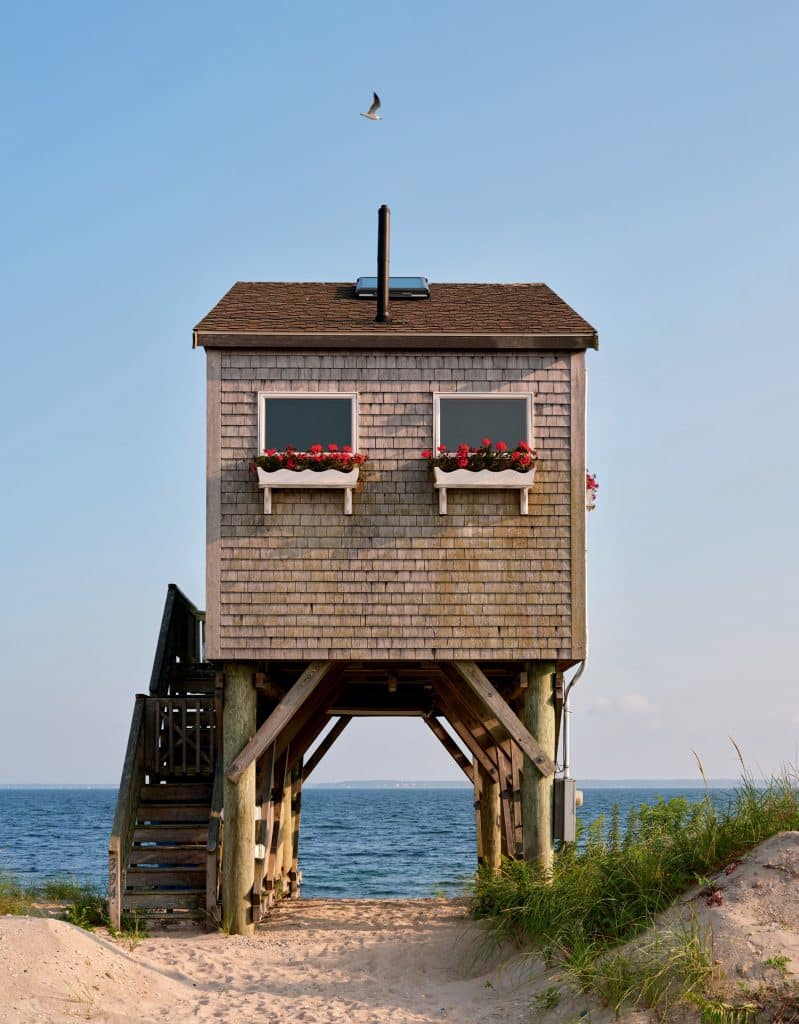
Photo Credit : Elizabeth Cecil
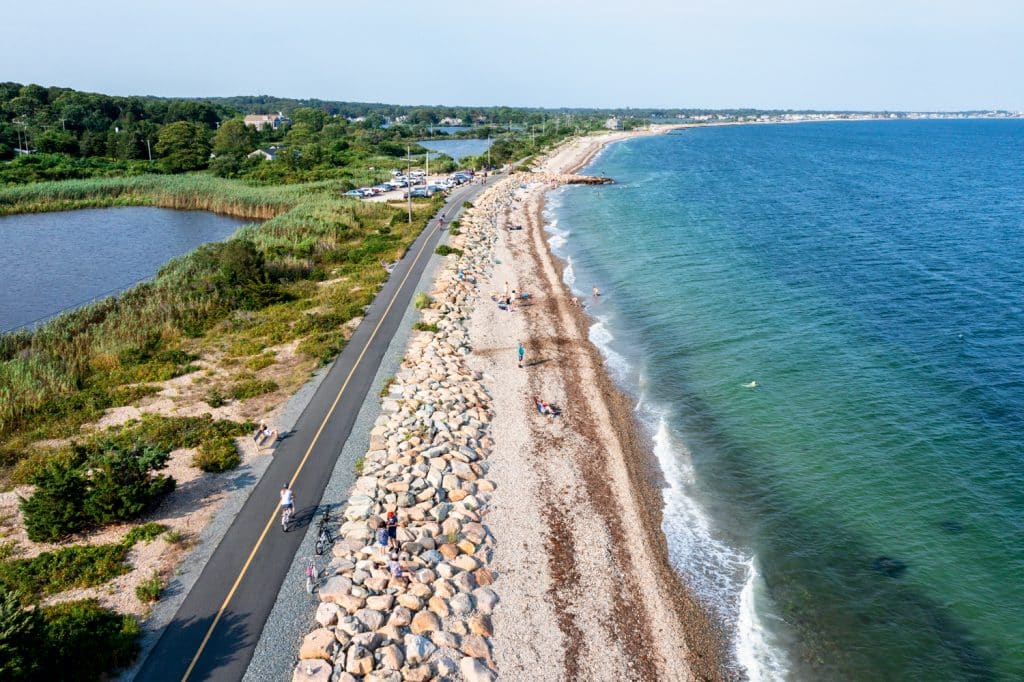
Photo Credit : Cate Brown
After our train ride ends, we drive back over the Bourne Bridge to get a closer look at the Gray Gables Railroad Station, a tiny, Instagram-worthy train stop built for President Grover Cleveland, who had a summer White House nearby. It’s now part of the Museums at Aptucxet, a 12-acre campus managed by the Bourne Historical Society. Here, you’ll see a replica of the 1627 trading post built by Plymouth Colony settlers to trade with the Wampanoag people and with traveling Dutch traders. There’s also an art studio and gallery, a re-created 19th-century saltworks, a pedal-powered hand-built carousel, and a landlocked replica of an 18th-century coastal schooner. You can roam the grounds and gardens anytime, but to visit the museums and galleries, come on Thursday, Friday, or Saturday. (And be sure to check out upcoming workshops by Wampanoag Otter Clan elder Carol Wynn.)
As the day lengthens, we head down the path from the museum grounds to stroll along the canal, check out the boat traffic … and realize we may have to adjust our schedule. The plan was to soak in the ambience at the Chart Room in Cataumet, a converted barge that’s been a waterside eatery since 1966. But after a good long day, we instead drive toward the mid-Cape and order steaming curries from Hyannis’s Pavilion Indian to eat alfresco, at home, on the deck.
DAY 2: We Squeeze the Upper Arm
(Sandwich–Mashpee–Osterville)
I wake up the next day thinking of Cape Cod’s ancient peat, and I want to share what I’ve learned with artist Ed Chesnovitch. His studio on Route 6A in East Sandwich is open to the public Thursday through Sunday in the summer. It’s a one-room cottage, perched on the edge of the marshlands of Scorton Creek. Inside, the walls are covered with Ed’s paintings and pastels—they reveal themselves in layers, floor to ceiling, with the lowest level stacked several canvases deep. Ed’s 2020 show at the Cape Cod Museum of Art was called “Man on the Marsh,” and the title suits.
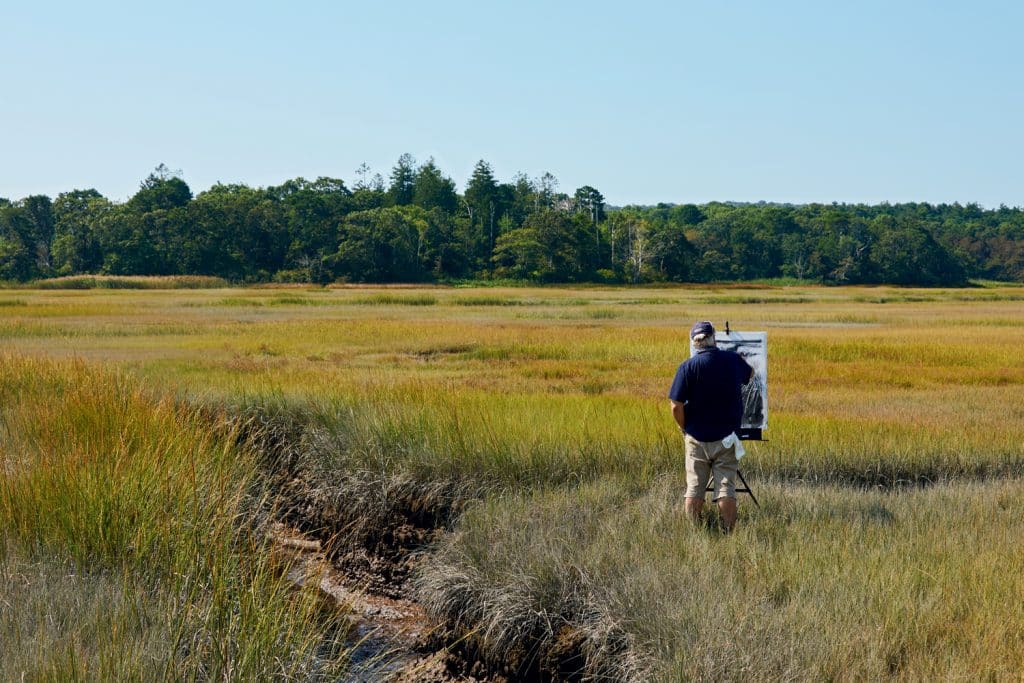
Photo Credit : Elizabeth Cecil
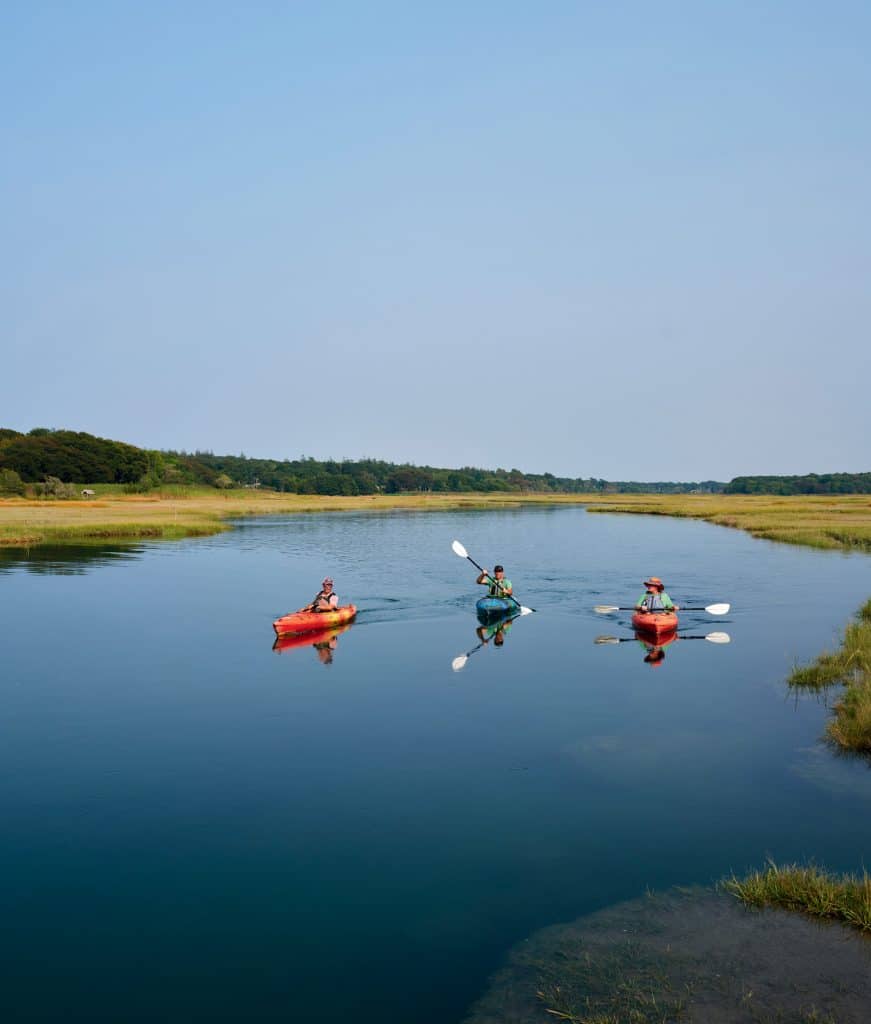
Photo Credit : Elizabeth Cecil
“All my inspiration comes from here,” he says, as we step onto the cottage’s tiny back porch and stare at the wetlands. “The light changes about a billion times a day, and I love watching the tides.” What does he do when he’s not painting? “I love to walk the marsh. It’s great to slow down and just float in it.” He tubes most often, but Ed recommends RideAway Adventures for kayak rentals and tours of the nearby Sandwich Great Marsh.
I’m too hungry to paddle, so we hit Café Riverview, where students from the private Riverview School serve customers. After sandwiches here, and with blueberry muffins to go, we’re ready for a meander through historic Center Sandwich, and then over to Route 130 to visit the Mashpee Wampanoag Museum. The People of the First Light have been here centuries longer than any settlers and all manner of wash-ashores, and the tribe remains very much a part of the fabric of the Cape. Back on Route 28, we turn by the sign for the Wampanoag Meeting House to learn a little more.

Photo Credit : Elizabeth Cecil
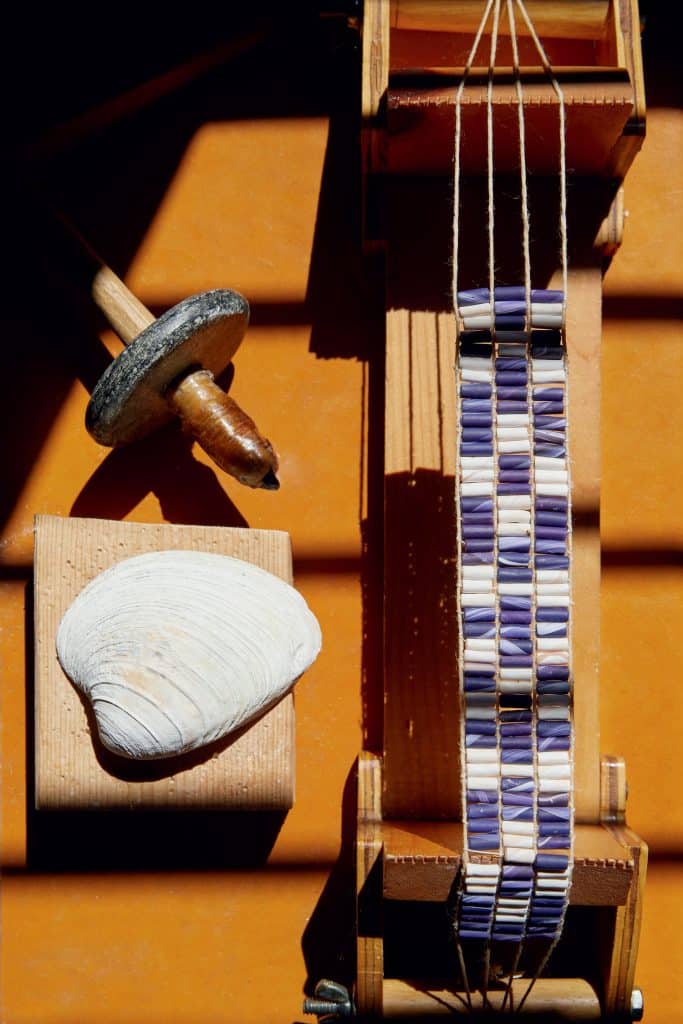
Photo Credit : Elizabeth Cecil
We stop at home and grab snacks on the way to Dowses Beach in Osterville. It’s a calm-water, south-facing beach on Nantucket Sound with multiple personalities: good fishing on one end, hermit crab hunting on the marsh side, paths between sand dunes covered in beach roses leading to the easy-to-enter water on the beach side (there’s also a wheelchair path to the water’s edge). By day, this is a resident-sticker beach, but after 5, it’s open to all. Munching on cheese and crackers, I’m thinking about the People of the First Light and how, if you live here long enough, the skies become your calendar. Last light tonight, I recognize as golden August. June’s wild roses are now red-orange hips, and October’s dune asters are in bud. When we uncover hidden histories, we reveal centuries of wisdom: learn the land, respect the sea, live gently on this place we call Cape Cod.
DAY 3: We Go Downtown
(Hyannis–Craigville Village–Centerville)
There’s a stretch of Hyannis along Route 132 that feels like the sprawl of Anywhere, USA. But there’s a lot more to explore in what serves as the downtown for all of Cape Cod—and today, we’re taking it in.
We park in the big lot on North Street, cut through the alley, and cross Main Street to visit the JFK Museum. I’m surprised by this place every time I visit. The photographs and curated exhibits, evocative of another time in this same place, remind us that even a U.S. president can enjoy a seaside holiday. And there’s something about seeing the black-and-white images of people—important, historic people—just enjoying their Cape vacations that always gets to me.
Outside again, we pause to admire the statue of Chief Iyannough before crossing the green and making our way down to the waterfront. The town-sponsored HyArts Artist Shanties are always worth a visit, especially during the weeks my friends Janet and Donald Gauland share one of the colorful harborside sheds that house a rotation of painters, sculptors, textile artists, and jewelry makers all summer long.
Lunch? Amid so many choices, we opt for the Naked Oyster. It’s hard to get more local—chef-owner Florence Lowell farms her own oysters in Barnstable Harbor—and for the shellfish-averse (like me), they serve terrific burgers.
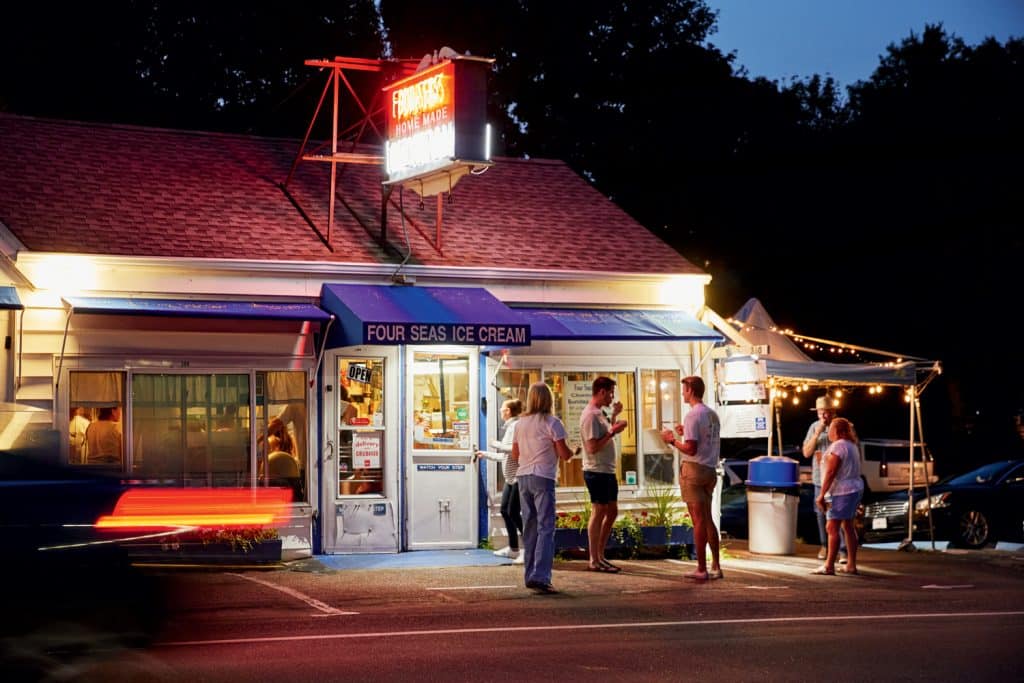
Photo Credit : Elizabeth Cecil
Also on tap for exploring: the Zion Union Heritage Museum on North Street, honoring the art, culture, and history of the Cape’s people of color. Look into the spare but lovely Zion Union Mission Chapel, founded in 1909 as a result of Blacks’ feeling unwelcome at the nearby Baptist church, and sense the weight of history. The art on the walls, the artifacts, the mere existence of this place reminds visitors of the inner beauty and greater substance of the Cape—the stuff that can be overlooked in the hurry to hit the beach.
We take the shore route out of Hyannis, hanging a right on Centerville Avenue for a quick cruise around Craigville Village, a tiny, historically religious settlement on the bluff above the beach. I love visiting best in winter, when it feels like being lost in the gingerbread-cottage era of the 1800s, but it’s lovely in summer, too. Back down the hill, we motor past Craigville Beach and over the Centerville River to enter the village of Centerville. Here, the downtown consists of the South Congregational Church, the library, an old schoolhouse turned recreation building, a playground, the 1856 Country Store with its jars of penny candy, and a long line of beautiful old homes. (To learn the stories behind the buildings along leafy Main Street, download a walking tour map from the Arts Barnstable website.)
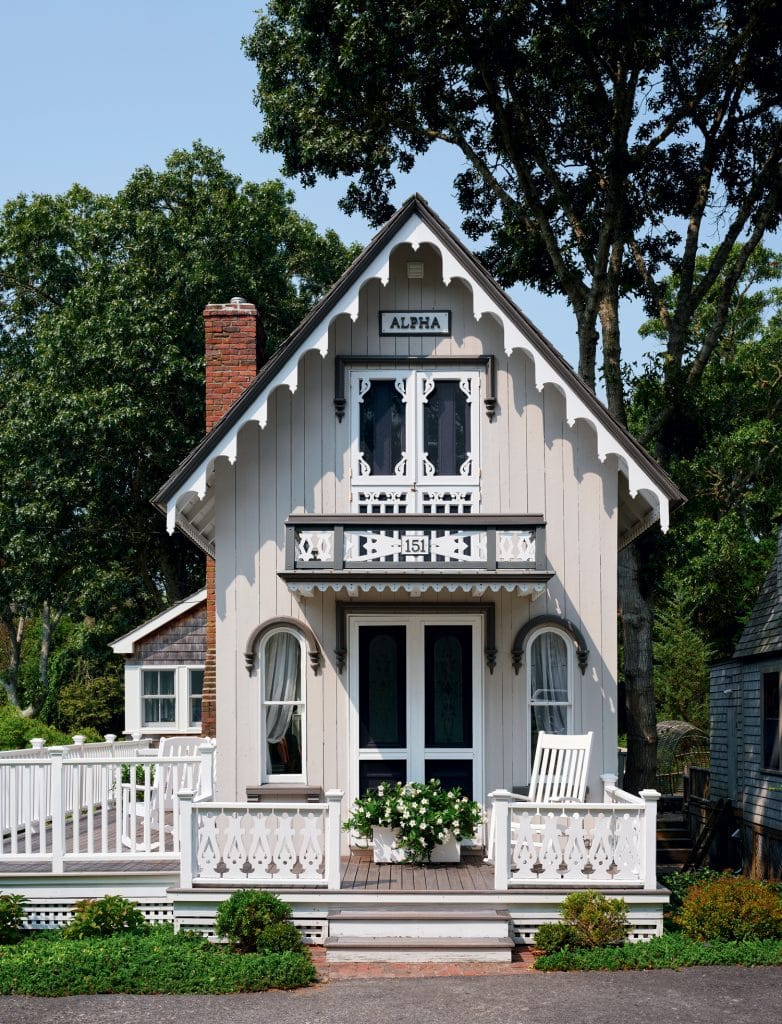
Photo Credit : Elizabeth Cecil
And because it’s summer and because we can, we’re skipping supper in favor of homemade ice cream from the iconic Four Seas, just around the corner.
DAY 4: A Goreylicious Day
(Yarmouth Port )
We begin our day with brunch and a short stack at Jack’s Outback II. It’s the current incarnation of the glorious and notorious Jack’s Outback, where, after writing up their own orders on the pads by the door, the diners were roasted by the lovably sarcastic proprietor as he delivered their dishes. We’re here not only as a tribute to the original Jack, but also to honor the quirky artist Edward Gorey, who came here daily, preferring a counter seat.
The Edward Gorey House, just off Route 6A on Strawberry Lane in Yarmouth Port, opens this day at 11. Once inside, we are free to roam. If you’re not familiar with this master of tongue-in-cheek macabre, a fact-packed tour will catch you up. Fans and newbies both will want to undertake the scavenger hunt to find all 26 of Gorey’s “Gashlycrumb Tinies.” (Should you be accompanied by a friend who will not rest until every mystery is solved, plan on a longer visit.)

Photo Credit : Elizabeth Cecil
Lunch is bagged, so we drive 6A toward the Yarmouth Port post office and the entrance to 50 acres of shady trails, perfect for a gentle summer hike. Near the trailhead are the petite Kelley Chapel and the Benjamin Hallet Blacksmith Shop, both 19th-century buildings relocated to this site. We walk just a little farther to see the Too’noopahs (Turtle) Wetu, a traditional Wampanoag shelter and the result of a 2021 collaboration between the Historical Society of Old Yarmouth and Marcus Hendricks, a Wampanoag Nipmuc. The stretched bark siding is carefully applied, but we’re especially impressed by the sturdy semicircular bench made of branches that follows the curve of the outer shell. Even if you don’t venture onto the trails, this wetu is worth the visit.
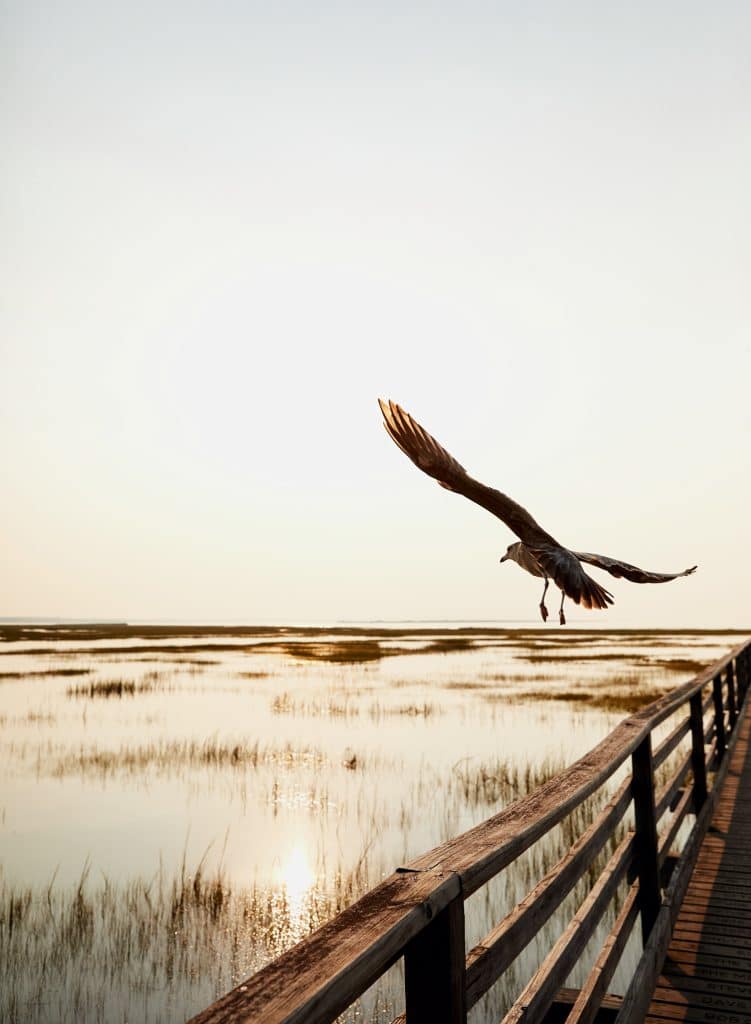
Photo Credit : Elizabeth Cecil
As the day cools into evening, we set off for Grays Beach, just down the road. The Bass Hole Boardwalk is one of my favorite places on the Cape. The embossed plank walkway is accessible for all ages and abilities, and in summer, the marshes are teeming with life beneath your feet. It’s easy to while away an hour leaning over the railing to see what’s down there, especially if you have youngsters in tow. Bonus: The observation deck at the end has built-in seating, ideal for sunset selfies with friends.
Finally, dinner—how about Japanese? An understated presence on 6A, Inaho has been wowing folks with beautifully prepared sushi and great service for more than 20 years. There’s an assortment of options for the non-sushi eaters, too. It’s wildly popular, and reservations are recommended in the summer. Lucky we planned ahead.
DAY 5: Bumping the Elbow
(Chatham–Truro–Wellfleet–Eastham)
I am not a morning person, but on the other hand, there is Hangar B. Tucked into the tiny Chatham Municipal Airport, this is a place where breakfast reigns supreme (they even have gluten-free vegan cinnamon pancakes). Oh my goodness, every plate makes you want to take a photo even if you never share food pics on social.
After our gorgeous meal, we head to Chatham’s walkable center. It has two local bookstores, Yellow Umbrella and Where the Sidewalk Ends, that both demand stopping. As does Gustare Oils & Vinegars, which has been on my list forever; I fear the damage I’ll do there but can’t wait to step inside. And we grab a sweet treat for later at Chatham Candy Manor, whose old-timey name belies the fact that it’s been women-owned since 1955. Its truffles are astonishingly delicious.
Our shopping stroll has a “time flying” element, and this is a day for eating whatever we want (vacation, right?). So we pop into Mom & Pops Burgers for lunch. Trust me: You need these French fries. I discovered Mom & Pops at a Chatham Band concert (Friday nights at 8, but save your seat by 4), when I noticed almost everyone was carrying their takeout boxes.
Doubly fueled, and feeling the day warming, we seek a breeze and a view (through old-fashioned coin-operated tower viewers) at the overlook above Chatham’s Lighthouse Beach. On Wednesdays in summer you can tour the working lighthouse across the street. Operated 24/7 by the Coast Guard, it stands 48 feet tall at 80 feet above sea level—for Cape Cod, that’s pretty high. In the waters below the light are the Chatham Bars, a notoriously dangerous spot for seafarers past and present. We marvel at the clear skies and long vistas before we pack up to drive north toward Truro.
We are in search of the High Head Conservation Area, and specifically the new trail system that opened last year. I hear there are wolf oaks there, and just the name makes me want to see the rare species. Parking at the cutaway from Route 6 heading west, we spot a solitary wolf oak just to the left of the trail map kiosk. My wimpy ankle isn’t up for hiking to see a lot more, but I vow to return, to experience this walk that blends woodland cover (shade on a summer day) with bayside views—and has benches, too.
Atlantic Spice Company is next on the list. I’ve long known that the Cape’s wholesale spice vendor has a retail shop; however, the image in my mind of old-world charm does not match up with the blocky blue building at the intersection of Routes 6 and 6A in North Truro. But, ah—the enchantment is inside, where there are rows of herbs and spices and every kind of cool kitchen tool you’d want. I pick out a blackbird pie vent for my 16-year-old niece, who’s become quite the baker, and can’t resist grabbing some bulk spices for myself.
From here, it’s back to Wellfleet Center to pop into the book department of the everything-you-could-need Wellfleet Marketplace, reinvented in 2007 by Booksmith entrepreneur Marshall Smith. He was a dear friend, and I’m glad this place lives on thanks to his son Jed’s stewardship. Next, just around the corner is another marsh walk (do you detect a small obsession?) across Uncle Tim’s Bridge; parking is by donation in a nearby dirt lot. Last winter, I encountered a chatty oysterer gathering his supper beneath this boardwalk.
Dinner tonight is a nostalgia pick—the Red Barn Pizza in Eastham, where the pies are as good as my kid-self remembers—before we take in the sunset from the tippy-top of the steep stairway that leads to Eastham’s Thumpertown Beach. Named for the revivalists who thumped and stamped their feet in praise, it’s the beach of my childhood summers. If I squint, I can almost see the old “target ship,” aka the World War II–era SS James Longstreet, that once was as much a part of every sunset here as the expansive bayside sky.
DAYS 6 & 7: To the Pointed Fingertip
(Provincetown)
Provincetown deserves a day of its own, and a night if you can manage it—that’s when P-town truly comes alive. “I tell folks who are coming from Boston to take the ferry, so they don’t have to worry about a car,” says my friend Brian Calhoon, who, along with his husband, Tom Westmoreland, owns the Brasswood Inn.
We’re laughing about the wrong turn that landed me on Commercial Street, P-town’s main drag. It’s more town square than roadway. My advice: Do not attempt to drive it. You’ll encounter scooters and electric bikes, double-parked delivery vans, even a tourist trolley (worth the ride), plus visitors and locals spilling off the funky raised sidewalks. It’s better to approach Commercial Street on foot and unhurried.
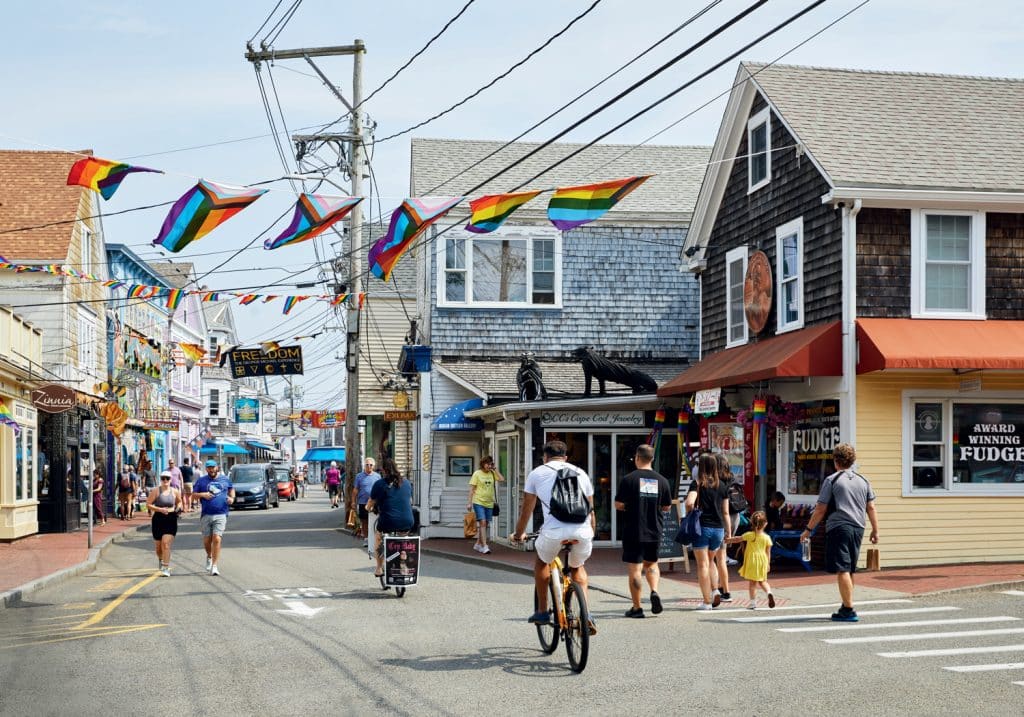
Photo Credit : Elizabeth Cecil
While checking out P-town’s unique shopping district, don’t miss Vintage in Vogue, where the vintage can be as early as 1840. And even if you’re not in the market for a tattoo, it’s worth a quick stop at Mooncusser Tattoo just to check out the wall art. Maybe grab one of their souvenir tees to make you look way cooler than you are.
“Tin Pan Alley,” Brian says, when we ask for a lunch recommendation; his mom, Liz (who, along with Brian’s dad, Stuart, helps out at the inn), nods vigorously. There, you can choose a booth with a water view or settle into the tavern (where on Monday nights you can belt out your favorite tune if you’re brave enough—or just listen, with the decent chance that a real singer, sometimes even with Broadway cred, will show up). While bustling, Tin Pan Alley is mellow by P-town standards. Our waiter, Justin, says he used to work at the Crown & Anchor, where as many as five stages may be hosting acts on a single night, and he’s loving his newish gig. But the great thing about staying overnight in P-town is you don’t need to choose. You can wander. Dip in, dip out, all day and night.
A daytime walk must include a visit to the hilltop Pilgrim Monument, named in honor of the Mayflower Pilgrims, who spent six weeks on the Cape’s tip before setting sail for Plymouth. If you haven’t been up there recently, chances are you haven’t arrived via the funicular. The inclined elevator connects the monument grounds to Bradford Street, and it just opened in 2022. If you’re feeling ambitious (and fit), you can climb the 252-foot monument’s many stairs and ramps to take in the vista from the top; back on the ground, be sure to visit the adjacent Provincetown Museum, which hosts the first permanent exhibit in the world to tell the Pilgrim story from the Wampanoag point of view.
Back on street level, we make our way to the corner of Bradford Street and Duncan Lane, looking for a yard filled with flowers. Dahlias, to be precise. Stormy Mayo, a marine scientist who lives and works in P-town, is famous for his dahlias—generations of them are on display from mid-summer into fall. That’s another thing about P-town and, really, all of Cape Cod: We love our gardens. Always allow time to inhale the heady mixture of seaside air and sun-dappled blooms.
Next stop: the Provincetown Public Library, one of the most unusual in the country. Why walk inside a public library on a summer day? Because this one, located in a former church, houses a ship. Take the elevator or the grand staircases to the second floor, and, from the level of the gleaming wooden bow, look up at the rigging and the sails of a half-scale model of the Rose Dorothea. Go up one more floor for the aerial view. The library is a perfect midway resting stop, an oasis of calm and quiet, complete with window seating, overlooking Commercial Street and Provincetown Harbor.
P-town’s remarkable light is a magnet for artists and photographers, and the end-of-earth location draws writers, too (for proof, check out the Fine Arts Work Center, offering a robust schedule of workshops and readings). But we’ll save the art galleries in P-town’s East End for the morning. A friend has two paintings in the current show at the Provincetown Art Association and Museum (PAAM), and a visit there is always a visual treat. (Tip: Purchase joint admission for PAAM and the Pilgrim Monument and Provincetown Museum.)
After dark, Commercial Street becomes an impromptu carnival, complete with barkers and street musicians, and club-hopping is definitely a thing. But first, we’re going to take in a porch concert at the Brasswood Inn. Brian is a pro, and he wails on marimba every summer Thursday. As for his favorite performer? “You have to hear Qya Cristàl,” he says. “She lives here year-round, and I think she’s the most talented performer in P-town.”
By bedtime, I’m happily exhausted, but I vow to see dawn at Race Point in the morning. When you emerge from the dunes and see the water and sky, you feel like you’re in a place apart. Will I actually catch the sunrise? Hard to say, but I know I’ll make it to the beach before 8, and with careful navigation, I think I can get there without taking a single left-hand turn.


